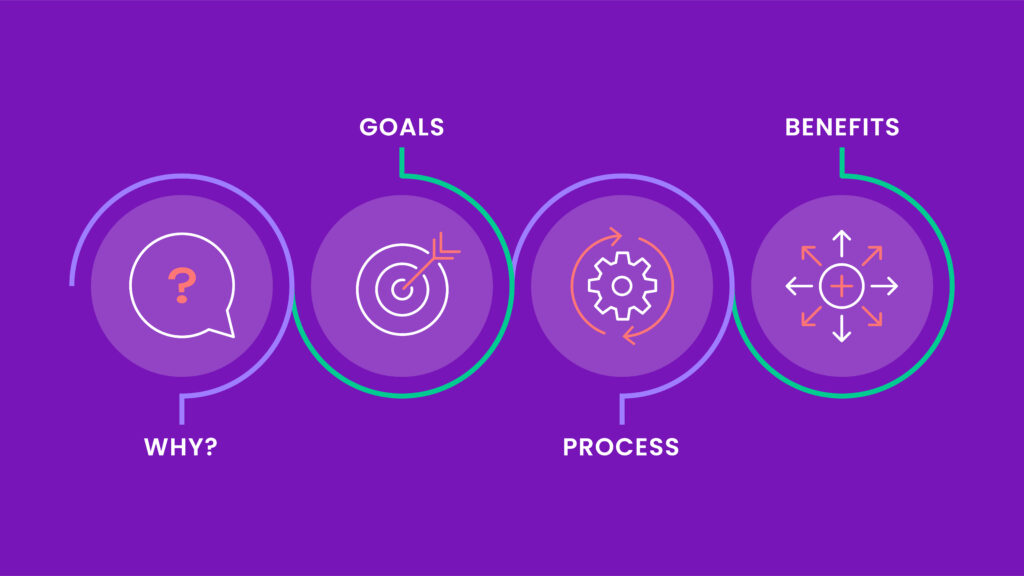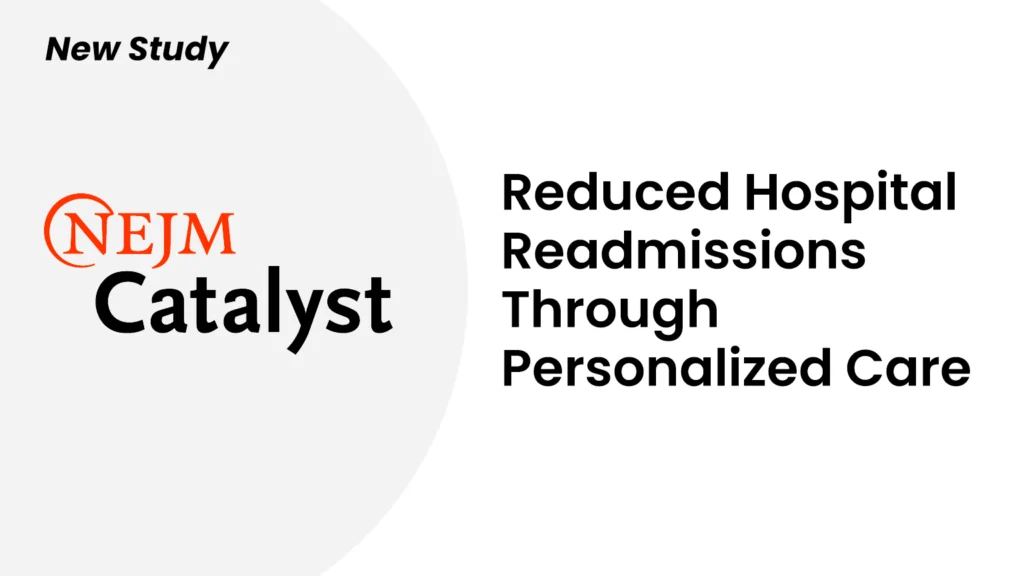At a Glance:
- Importance of Patient Segmentation in Healthcare: Patient segmentation allows healthcare organizations to tailor care delivery and policies for different groups, helping identify high-risk, high-cost patients and customize interventions.
- Process of Patient Segmentation Analysis: The process involves creating patient groups based on shared characteristics, utilizing EHR data and analysis tools for effective segmentation. Health systems should set relevant goals for segmentation, such as improving outcomes and identifying high-performing providers.
- Benefits of Patient Segmentation: Not only does patient segmentation facilitate personalized care and targeted interventions but it improves health outcomes and reduces preventable spending.
Making sure your patients are engaged – one of two key elements driving patient experience – lays the foundation for stronger patient-provider relationships built on trust, empathy, and understanding. Positive relationships can help improve patient satisfaction and yield patient loyalty. And when a patient has a consistent, trusted source of healthcare, health outcomes can improve as well.
The Patient Engagement Playbook
Artera™ recently created “The Patient Engagement Playbook,” which offers six best practices for patient engagement to enable you to foster lasting connections with your patients that will ultimately lead to greater results for both your patients and your organization. The playbook will walk you through six critical steps to increase patient engagement – the second of which covers patient segmentation analysis.
But before we dive into patient segmentation, let’s define what engaged patients are:
- Informed – They understand their health status and the recommended treatment.
- Heard – They communicate with their providers and participate in shared decision-making.
- Empowered – They believe they can change their health outcomes.
- Active – They take action on their health based on personal learnings and overall understanding.
Although engaging patients – and keeping them engaged – can be challenging, it is a vital process for attracting and retaining them. Effectively engaging patients in their care is essential to improving health outcomes and staff efficiency, increasing patient satisfaction, and reducing costs while driving revenue.
“The Patient Engagement Playbook” discusses how greater patient engagement can:
Improve health outcomes: Strong patient engagement increases adherence to treatment regimen recommendations among patients, which in turn leads to fewer complications and re-hospitalizations. Several U.S. studies recently reported coordinated care trials that actively engaged patients with chronic disease resulted in significant mortality reductions compared to a control group who merely took appropriate medications. The studies suggest chronically ill patients who are engaged in their care live longer than unengaged peers who otherwise receive similar treatment, meaning health and well-being are fostered by engaged and activated patients. [1, 2, 3]
Enhance staff efficiency: Patient engagement strategies can help reduce front-end staff workload by reducing time spent on phone calls which take up a significant portion of time and can lead to support staff burnout. With more valuable time back, staff can spend more time on direct patient care.
Increase patient satisfaction: Personalized and unique patient engagement enables patients to feel heard and seen and empowers them to make decisions about their care. This can enhance overall satisfaction, and facilitate longer-standing relationships with providers while improving patient experience measures.
Reduce cost and drive revenue: Patient engagement directly contributes to outcomes affecting hospital costs and reimbursement for health systems. Executing effective patient engagement strategies also means better patient retention and referrals.
What is Patient Segmentation?
If care is to be truly centered on the patient, the patient’s specific care needs and other characteristics must be addressed. While it can be challenging and quite expensive to meet the unique needs of every individual, programs can be developed for groups of patients with similar characteristics. This process refers to patient segmentation, also known as healthcare market segmentation.
According to Health Affairs, “Patient Segmentation divides a patient population into distinct groups—each with specific needs, characteristics, or behaviors—to allow care delivery and policies to be tailored for these groups.”
Segmentation is both:
- Person-Centric – an individual is assigned to just one category based on their top health need (mutually exclusive).
- Hierarchical – there is a range of categories from the healthiest individuals to those with the highest clinical need.
As a healthcare organization, it’s crucial to segment your patient populations as it will help you identify high-risk, high-cost patients, understand the complex care needs of various patient groups, and tailor care delivery or engagement efforts based on those specific needs. These distinct groups can be based on various factors, such as risk of morbidity or mortality, usually defined by a long-term condition, pain, discomfort, functional status, as well as demographics, predicted behavior, or social determinants of health.
Addressing high-need, high-cost patients is increasingly pressing. Today, payers and providers alike are focused on finding more meaningful ways to deliver care for high-cost patients – those defined as having three or more chronic diseases and who account for a large portion of healthcare spending – to improve outcomes and decrease spending. To do so effectively, organizations must not only target patients on the basis of cost alone but must also consider their differing personal characteristics and needs.
According to research by The Commonwealth Fund, high-need adults “average annual per-person spending on health care services and prescription medicines topped $21,000, nearly three times the average for adults with multiple chronic diseases only, and more than four times the average for all U.S. adults.”
How to Perform a Patient Segmentation Analysis
Regardless of how it’s done, improved patient segmentation can improve quality metrics, target resources or communication strategies, reduce healthcare spending, and drive better outcomes. To help you get started with this process, we’ve outlined the four critical steps to conducting a patient segmentation analysis:
- Create patient segmentation groups
There is no one right way to create patient groups. In fact, the segmentation logic may be “completely data-driven” or “non-completely data driven,” depending on the types of data available and the specific goals of the health system. Using a data-driven approach, data from a variety of sources are pooled and statistical clustering is performed, whereas with a non-completely data driven approach, expert input is used for defining segmentation criteria.
Ultimately, the first step in any patient segmentation analysis is to identify the shared patient characteristics and insights on patients’ behaviors and attitudes you want to collect. Determine the factors you need to create segment groups such as long-term conditions, demographics, age, geographic location, etc. Segmenting patients with complex needs into smaller, targeted subgroups can help further the focus on which interventions may be more effective for specific people.
According to Researchers at the Center for Medicare and Medicaid Services (CMS), segmentation based on patients’ “health prospects and priorities” enables an element of “patient-centeredness” – a goal that many providers increasingly strive to meet. What’s more, this approach provides the strongest potential for improved outcomes. When dividing patient populations into segments, the same researchers cited three “conditions” or useful principles to consider:
- The number of segments must be limited – each segment should represent a relatively substantial portion of the population
- The segments need to include everyone meeting the segmentation criteria
- The people in each segment should have similar healthcare needs, rhythms of needs, and priorities—and segments need to be sufficiently discriminatory
The ultimate goal of patient segmentation is to build behavioral profiles and collect meaningful data for each patient so providers exactly when, where, and how to reach them. By identifying patient needs and risks, health systems have the opportunity to design unique care plans or service packages, ensuring that each individual’s health needs are met effectively and efficiently.
- Use EHR data and patient segmentation analysis tools
With no one proven model, some health systems develop their own approaches to segmenting patients while others use big data to help divide a patient population into distinct groups, as previously stated. Despite varying models, data from administrative systems or well-designed electronic health records (EHRs) can be critical in helping to group patients into segments based on pre-determined factors. Ideally, the EHR has a comprehensive record of a patient’s healthcare journey from various sources such as hospital and clinic records, along with a history of patient communications to help identify which segment a patient fits. The EHR information, in conjuction with a patient segmentation analysis tool, may very well enable a triangulation of patient healthcare need variables from various sources.
Health systems also have the choice of using various off-the-shelf patient segmentation data analysis tools. A sampling of available solutions include:
- The 3M Clinical Risk Groups (CRGs), a population classification system that uses inpatient and ambulatory diagnosis, procedure codes, pharmaceutical data, and functional health status to segment patients among 272 groups for detailed risk analysis.
- The Johns Hopkins Adjusted Clinical Groups System offers a patient segmentation tool, Patient Need Groups (PNGs), which groups individuals based on their specific health needs, individual characteristics, and behaviors.
- The Community Assessment Risk Screen (CARS) is a simple method for identifying elderly patients who are at higher risk for health service use and increased costs by allocating patients to one of ten risk levels.
- Decision Point Healthcare Solutions developed a set of patient personas that address behavioral patterns beyond age, gender, and disease state – a more modern approach viewing patients’ highly variable lives and behaviors as defining risk states.
Another segmentation method health systems have employed is to use geographic data software called geographic information systems (GIS) to better understand patients’ needs. GIS tools can map around 10,000 data points regarding consumer behaviors, and provide information on healthcare spending per capita in a specific location. This data is combined with other information such as demographics, health services consumption, and disease prevalence information to create health profiles for specific communities.
For example, Loma Linda University Health wanted to find out why they consistently were getting large numbers of people brought to their hospital for 72-hour psychological holds. They used the Esri GIS software to map where the patients were coming from and discovered they were all from certain communities. This information prompted a further investigation which revealed that law enforcement in those neighborhoods needed to be appropriately trained on how to identify people who needed hospitalization and those who did not.
- Identify patient segmentation analysis goals
Below is just a sampling of the many positive outcomes a patient segmentation analysis can provide. When setting up your patient segments and analysis framework, ensure you identify key goals and measures within your organization.
- Once specific groups are segmented and analyzed, interventions, care, and patient engagement strategies can be tailored to the particular needs of each population group.
- Segmentation can help health systems identify those patients who are high-cost and high-need, along with why they become this way. This can ultimately help limit preventable spending, for example, by cutting down on high-cost utilzation services such as emergency department (ED) visits.
- Segmentation can help determine the return-on-investment (ROI) for specific populations by identifying which interventions or treatments work for patients with complex needs.
- Segmentation and analysis can help identify the providers in a health system who are the most effective and high-performing.
- Segmentation can improve quality metrics and drive improved health outcomes. Troy Long, M.D., executive consultant on population healthcare for PMG Healthcare Solutions, explains it as such: The top and the bottom of any set of quality benchmarks may sit 15 points apart. That “flat part of the curve” is where patient segmentation makes a difference, even just by “making a smidgen.”
- Health systems adopting cohort-similarity approaches to patient segmentation can more readily incorporate a wide variety of patient-centered, whole-person approaches to care, such as focused outreach and communication, targeted digital programs, integrated practice units, and more.
- The process of patient segmentation can help providers better understand the community they’re serving, gaining insights that can improve access to care and eliminate any barriers or roadblocks in the way.
- Health systems may even use segmentation to make sure they’re not missing patients who don’t seek out care but may nonetheless be high-risk, ensuring no patients are left behind.
- Sharing patient segmentation analysis
Using segmentation, health policymakers are better able to match healthcare services to needs, thus improving whole population health outcomes and even reducing healthcare spend. Take a detailed look at how patient segmentation impacted your patient outcomes and system in general and make sure to document the progress. When these changes occur to fit a more personalized, strategic approach to care, it’s important to share the analysis more widely so others can learn from your processes.
Another promising trend is the sharing of information – specifically social determinants of health – across communities. For example, The Parkland Center for Clinical Innovation (PCCI), a nonprofit that was spun off from Parkland Health & Hospital System, is building the Dallas Information Exchange Portal, a platform that will allow hospitals, clinics, homeless shelters, food aid groups, and other service organizations to share information about the social and economic needs of vulnerable patients. Ideally this will help inform providers of the various types of patients and social parameters within the community.
Patient Segmentation Can Lead to More Personalized Care
Overall, with more clarity, understanding, and intentionality, comes focused opportunities for health improvement – especially for patients who may require more complex care management. If you could get ahead of an individual’s needs, and design and execute a care plan, you have the opportunity to hopefully keep them out of the hospital – saving time, money, and potentially, a life.
“We want to understand what are the issues they face, what are the barriers that they face, who are they, where are they going, what’s happening to them. And we can use that information to drive strategy,” says Pete Knox, executive vice president at Bellin Health.
For example, a 2019 study found that food insecurity – which can lead to diabetes, heart disease, and other chronic conditions – costs the health system an additional $53 billion a year. By proactively identifying people living with, or at risk of, food insecurity, and then engaging with them early on, we could significantly reduce the health consequences that it causes, improving overall outcomes.
As health system reform shifts from fee-for-service to value-based care models, the incentives to focus on and improve care for high-cost, high-need patients will only continue to grow. With no single proven model, however, health systems will need to get creative in terms of developing their own approaches to patient segmentation. What’s most important is to gain a deeper understanding of your patients and their behaviors so you can not only improve outcomes and advance personalized care but also reduce costs and identify areas of opportunity.
Why Healthcare Market Segmentation is Critical in Today’s World
Healthcare market segmentation is essential in today’s rapidly evolving industry. By dividing the market into specific groups based on demographics, needs, behaviors, or preferences, healthcare providers and organizations can deliver more personalized care, improve patient outcomes, and enhance overall efficiency. Segmentation helps identify underserved populations, tailor communication strategies, and allocate resources more effectively. As patient expectations grow and competition increases, prioritizing market segmentation allows healthcare organizations to stay ahead by addressing unique needs and fostering stronger patient relationships.
Optimized patient engagement strategies are essential for healthcare providers looking to properly address patient needs, which have shifted dramatically as a result of healthcare consumerization and the COVID-19 pandemic. Now more than ever, providers need to consider the six strategies in The Patient Engagement Playbook to facilitate greater patient engagement, connection, and understanding.



